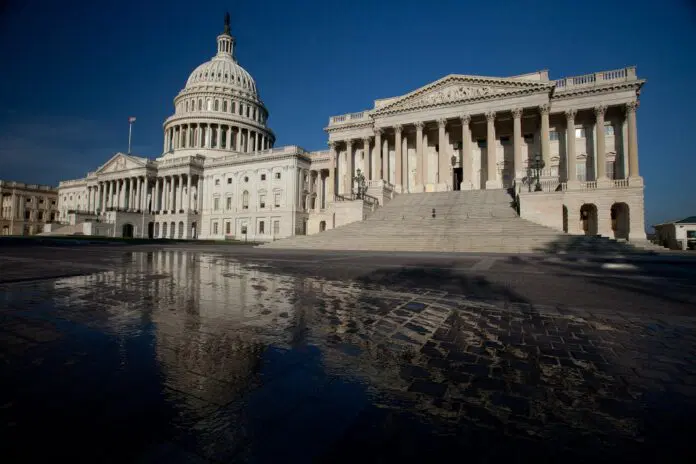The USA debt ceiling deal has been a hot topic among politicians and citizens alike. The looming question of whether the United States will default on its debts or not is one that has many people concerned. But what exactly is the debt ceiling, and why is it so significant? In this blog post, we’ll take a deep dive into the politics behind the USA debt ceiling deal to better understand how we got here, who the main players are in this debate, and what possible outcomes lie ahead. So buckle up and get ready for an insightful journey!
What is the debt ceiling?
The debt ceiling is a legal limit set by the US Congress on how much money the federal government can borrow to fund its operations and obligations. Essentially, it’s like a credit card limit – once you hit your limit, you can’t spend any more until you pay down some of your existing debt.
The first debt ceiling was introduced in 1917, but it wasn’t until the 1930s that it became a regular feature of US fiscal policy. Since then, Congress has periodically raised or suspended the debt ceiling as needed.
Currently, the US government is approaching its $28.5 trillion debt limit and has been using what are known as “extraordinary measures” to continue paying its bills without defaulting on its debts. However, these measures are only temporary solutions and will run out in October if not addressed.
While some argue that having a debt ceiling helps control government spending and borrowing habits, others believe it creates unnecessary political brinkmanship every time Congress needs to raise or suspend it.
What is the significance of the debt ceiling in the US?
The debt ceiling is a self-imposed limit on the amount of money that the US government can borrow to pay its bills. The significance of the debt ceiling lies in its ability to affect the financial stability and creditworthiness of the US.
Firstly, it is important to understand that if the debt ceiling is not raised, then there would be a risk of default by the Federal Government. This default could lead to serious economic consequences such as higher interest rates and inflation.
Secondly, reaching or exceeding this limit could also trigger significant political debates among lawmakers who may disagree on how much should be spent on certain programs or policies.
Failure to raise the debt ceiling can cause major disruptions in global markets, resulting in worldwide economic instability due to uncertainty over whether or not America will meet its obligations.
It is clear that maintaining an appropriate level for America’s borrowing limit plays a crucial role in ensuring economic stability both domestically and internationally.
How did the USA get into this situation?
The United States has been dealing with the national debt for decades. It began to increase rapidly in the 1980s due to tax cuts, increased military spending and other government programs. This led to a series of budget deficits that added up over time.
In 2011, the US government reached its borrowing limit or “debt ceiling” of $14.3 trillion. Since then, Congress has raised it several times but not without heated debates and negotiations between political parties.
One major factor contributing to this situation is entitlement programs like Social Security and Medicare which continue to grow as more baby boomers become eligible for benefits. The rising costs of healthcare have also contributed significantly.
Another issue is tax reform – there are disagreements between Democrats and Republicans on how much taxes should be raised or cut, making it difficult to reach an agreement.
Furthermore, economic recessions also play a role in adding up the national debt due to decreased revenue from taxes while expenditures on unemployment benefits increase.
Many factors have contributed towards the current situation with the USA Debt Ceiling Deal Agreement including increasing spending on various government programs coupled with decreasing revenue from taxation along with economic downturns all leading towards mounting debts putting pressure on law-makers and politicians alike.
Who are the main political players involved in this debate?
The USA debt ceiling deal has become a hot topic of debate among political players in the country. On one side, we have Republicans who are pushing for spending cuts and tighter fiscal policies to reduce the national debt. Meanwhile, Democrats are advocating for increased revenue through taxes on wealthy individuals and corporations.
At the forefront of this battle is President Joe Biden, whose administration’s economic policies aim to address income inequality while investing in infrastructure and education initiatives. However, he faces opposition from Republican leadership such as Senate Minority Leader Mitch McConnell, who has stated that his party will not support any efforts to raise the debt ceiling without significant spending reductions.
Other key political figures involved in this debate include Treasury Secretary Janet Yellen, House Speaker Nancy Pelosi, and Senate Majority Leader Chuck Schumer. These individuals play critical roles in shaping legislation related to government spending and taxation policy.
Ultimately, the outcome of this debate will have far-reaching implications for both parties’ political futures as well as America’s economic stability. As negotiations continue over the coming weeks or months leading up to October 18th – when Congress must vote on raising or suspending the debt limit – all eyes will be on these key players as they navigate complex policy terrain with potentially enormous consequences.
What are the possible outcomes of this situation?
The possible outcomes of the USA debt ceiling deal are complex and multifaceted. One potential outcome is that Congress will pass a new agreement to raise the debt limit, which would allow the government to continue borrowing money to pay its bills. However, this outcome seems unlikely given the current political climate.
Another possibility is that Congress will fail to reach an agreement, causing the US government to default on its debts for the first time in history. This could have catastrophic consequences for both domestic and international markets, potentially leading to a global economic recession.
A third option is that President Biden may use his executive authority under Section 4 of the 14th Amendment to unilaterally raise or ignore the debt ceiling altogether. While this option has been used sparingly in past crises, it remains controversial and could spark legal challenges.
Regardless of which outcome ultimately prevails, there’s no question that resolving this issue will require compromise and cooperation from all sides of American politics – something that has proven elusive in recent years. Only time will tell what path Congress chooses with regards to raising their country’s debt ceiling limit.
Conclusion
The USA debt ceiling deal is a complex issue that has significant implications for the country’s economy and political landscape. The history of how America arrived at this point is complicated, but ultimately it comes down to a combination of factors including increased spending, tax cuts, and economic downturns.
As we have seen in recent years, debates over raising the debt ceiling have become increasingly politicized with both parties using it as an opportunity to advance their own agendas. However, as our nation continues to face unprecedented challenges such as COVID-19 pandemic recovery efforts and climate change mitigation measures, it is critical that leaders put aside their differences and work together towards finding solutions that benefit all Americans.
Ultimately, whatever agreement emerges from these negotiations must strike a delicate balance between fiscal responsibility and ensuring necessary investments in key areas like infrastructure development and social programs. Only time will tell what form this compromise takes or whether any progress can be made at all. But one thing remains certain: the stakes are high for all involved parties – not just financially but politically too!



